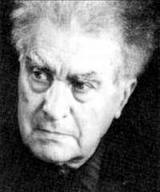Amazing, historic, never-before-public recordings from an under-documented, under-appreciated but highly developmental era of jazz and new music comes to light! Complete sets and interviews from the international stars who gave birth to world jazz and downtown improv at the Manhattan arts loft Soundscape will be broadcast by WKCR-FM  and archived online starting Sept. 6 — and are also at the core of the subscription-based CMS Archival Project, recently launched by the Creative Music Studio (Woodstock, NY, circa 1971 – ’84). And oh yes: audio clips have emerged of Edgard Varese conducting Charles Mingus et al in “free” electro-acoustic improvisation, 1957. This should all be big news to musicians, musicologists, listeners and anyone interested in contemporary American culture, as these sounds got us to what we hear now.
Maybe you’re aware of the Savory Collection, 100 hours of privately recorded Swing Era rarities (lots of Benny Goodman, Count Basie bands, Lester Young) acquired by the Jazz Museum of Harlem last week? The story has received unusually high-profile coverage in many mainstream media outlets, considering it’s about 70+ year-old material by well-known icons of the past who typically get more lip service than air play today.
Well, it’s August. And Savory captured players worthy of reverence, some of whom are said to stretch out (judge for yourself) further than they did on commercial releases back in the day. Sadly, rights issues may complicate the Savory Collection’s accessibility. For the immediate future, eager audiences will have to beat a path to the JM’s office, 104 E. 126th St., to enjoy samples of the digitally-restored Savory tapes.

But full sets and interviews featuring the likes of Sun Ra, Steve Lacy John Zorn, Peter Brotzmann, David S. Ware, Derek Bailey and Paquito D’Rivera (shortly after his defection to the U.S.) — from 1978 – ’83, an era when jazz LP production was at cautious low ebb, prior to the rise of the CD — will be broadcast and available on the web thanks to a renewed connection of long-defunct Soundscape and WKCR, Columbia University’s student-run station. Years back ‘KCR ran a “live from Soundscape” series. A few of those shows but also  many more will be heard from Sept 6 – 20, and some made permanently available as streaming audio from the site, with the entire enterprise scheduled to expand. According to ethnomusicologist and producer Verna Gillis, who ran Soundscape with her late husband, sculptor Brad Graves, artists’ rights for non-commercial uses have been cleared.
Though located in Manhattan’s far west 50s rather than literally “downtown,” Soundscape was Ground Zero for extreme yet productive experiments, de- and re-constructions, stylistic crossovers, no-genre labors of love and flat-out boundary-bending. Radical improvisers like Eugene Chadborne and Hans Reichel rubbed shoulders with Afro-Cuban and/or Nuyorican percussionists and instrumentalists such as Daniel Ponce, Puntilla, Andy and Jerry Gonzalez, Tito Puente, Jorge Dalto and Hilton Ruiz and staunch jazzers including Archie Shepp, Muhal Richard Abrams and Ed Blackwell.
Soundscape was not the only such center. Music that rejected stale conventions and rigid labels was explored, nurtured and championed earlier in the decade at the Creative Music Studio, which was co-founded by composer-vibist Karl Berger, vocalist Ingrid Sertso and Ornette Coleman. Though never a formally certified educational institution, CMS attracted as teachers and students, both, an enormous, impressive cast of innovative individualists with boundless musical curiosity.
John Cage, Maryanne Amacher and Speculum Musicae stopped by CMS as did Don Cherry, Anthony Braxton, Lee Konitz and Nana Vasconcelos, Pandit Pran Nath and Babatunde Olatunji. On Archive Selections Vol. 1, first of a series of cds that serve as benefits for subscribers supporting the CMS project (packages are described here; they include online access to video as well as audio files, and ongoing communication with CMS stakeholders), virtuosic contrabassist David Izenzon interrupts his beautiful pizzacato solo with comic grunts and complaints; alto saxophonist Oliver Lake soars over and squeaks through a CMS Orchestra projecting myriad dimensions, and the Mandingo Griot Society (Foday Musa Suso, kora; Adam Rudolph, hand drums; Hamid Drake, traps; John Marsh, electric bass) invigorates West African delicacy with Chicago blues funk. Among attendees at CMS were Marilyn Crispell, Peter Apfelbaum, Steven Bernstein, Sylvain Leroux, Tina Marsh, George Lewis, Douglas Ewart, James Emery, Robert Dick, Butch Morris, Evan Parker — who have remained leaders in the conception and production of personal yet widely encompassing and directly expressive sounds.
Treasure troves as the CMS and Soundscape archives and Savory Collection are, they will  contain few items as unusual as the 19 newly available, brief MP3s of a Sunday afternoon jam session sometime between March and August 1957 where 70-year-old iconoclastic composer Varese (pictured)

Edgar Varese Fernand Ouellette – Wikimedia Commons
directed a little big band comprising trumpeter Art Farmer, tenor saxophonist Teo Macero, alto sax/clarinetist Hal McKusik, probably clarinetist John LaPorta, two trombones and tuba, with Hall Overton on piano, Mingus bass, Ed Shaughnessy on drums and an unidentified vibist. This music, even in short duration, is mostly disorganized and tentative, yet it is unbounded and gives rise to some unique densities from atonal, arhythmic gestures. Varese is reported to have incorporated some excerpts in his Poem Electronique (premiered in ’58). The bits and pieces are rehearsals of fanfares, motifs or breaks that might have encouraged Mingus, informed Cecil Taylor’s Unit Structures, influenced the Jazz Composers Orchestra under Michael Mantler — and now like something that might pop up in compositions by Braxton, Maria Schneider or Darcy James Argue.
Moral of this posting: there’s a ton of compelling, all-but-completely unknown creative music of the ambitious, progressive “jazz” tradition ripe for discovery and celebration. Some of it is being made available free or cheap to anyone interested (once it’s brought to their attention) via the web, so that it can have near-immediate impact on music as it is evolving this very moment or be evaluated as missing history of the embrace-the-world, do-it-yourself “jazz” of the present, not just ballyhoo’d as sacred relics and languishing as precious museum pieces from a time long ago, far away.
